This is a great story by PEO Soldier’s Kyle Olson, updating you on their JETS program.
FORT GREELEY, Alaska – For nearly two weeks in mid-August, it seemed the only sound that could be heard between gusts of wind along a few of Fort Greeley’s Alaskan ridge lines was…
“Target Lock.” “Target Lock.”
“Lasing.” “Lasing.”
“Solution.” “Solution.”
“5…7…6…9.” “5…7…6…9.”
“4…2…5…2.” “4…2…5…2,” and so it went—more than two-thousand times.
Find a target. Check.
Identify the target. Check.
Range/Geolocate the target. Check
Call it. Verify it. Log it.
And do it again, and again, and again, and again.
Six teams of Forward Observers (FO) from the 1st Stryker Brigade’s 2nd Battalion, 8th Field Artillery Regiment and data collectors atop places like Windy Ridge and Donnelly Dome looked out over the Alaskan landscape. They picked out targets and called in target data acquired through the Joint Effects Targeting System, better known as JETS, as part of a Limited User Test (LUT). The Army’s Operational Test Command conducted the testing at the Fort Greeley Cold Region Test Center (CRTC).
JETS is a modular advanced sensor suite consisting of a hand-held target location module (HTLM), a precision azimuth and vertical angle module (PAVAM), and a laser marker module (LMM) that collectively offer the FO capabilities not contained in any currently fielded system. JETS allows them to quickly acquire and precisely locate targets.
When fielded, it will be the first precision targeting device of its kind provided to Soldiers.
“Its brand new cutting edge technology that is a paradigm shift in how the Field Artillery BOS (Branch of Service) is employed across the battle space,” said LTC Michael Frank, Product Manager Soldier Precision Targeting Devices (PM SPTD). With JETS, “I turn a [M777A2] howitzer or a Paladin into a giant sniper rifle. I’m dropping that round, with first round effects, on target.”
LTC Frank is guiding the development of JETS with the experienced hand of a FA officer with multiple deployments and more than 26 years in the Army. The lieutenant colonel emphasized that JETS not only provides greater precision, but also allows for a more rapid response. “Standoff doesn’t just mean range anymore,” LTC Frank said. “It means time. We can get kinetic effects on that target, and we don’t have to mess around with mensuration. We don’t have to take anywhere from 15 to 18 to 20 minutes to go through mensuration. We can get that target data to the guns and rounds out of the tube faster with JETS than without.”
According to CPT Eric Munn, JETS Assistant Product Manager (APM), “JETS will revolutionize how the Field Artillery conducts precision fire missions. A hand-held, stand alone, true precision targeting device that is fielded to every Forward Observer team will increase the agility and lethality of Field Artillery as a whole.”
Before the system is fielded, and well before Soldiers can experience the benefits of JETS on the battlefield, it must go through comprehensive and rigorous testing. While the 1st Stryker Brigade’s FOs could attest to the seemingly mind-numbing monotony of conducting thousands of data calls, they also understood the inherent value and importance of their mission.
“We have the ability to find things that are wrong with the system and have the capability of getting it changed,” said SPC Israel Wallace, FO, Delta Battery, 2nd Battalion, 8th Field Artillery Regiment (2-8 FAR). “We’d go up there, shoot grids, see if we can find anything wrong with it—see how long the batteries last, you name it.”
Although the Soldiers packed the JETS in their rucks and maneuvered through the Alaskan terrain to their observation posts, the LUT was not about the system’s durability on the move. It was about collecting enough data to verify its consistency, reliability, and ease of use.
“We don’t do a whole lot of rugged testing like throw it on the ground or anything like that,” SPC Israel said. “We’ll take it up there and use it all day long.” The Soldiers took note of things like the various connections and ports—were they easy to use or maybe vulnerable to snagging or breaking; was the tripod stable and easy to use; how did the system perform in the rain; and were the controls easy to use while wearing gloves?
According to CPT Munn, it’s essential that the JETS is developed with Soldiers in mind. “One of the most important parts of these tests is determining how suitable the JETS is for the Soldier and what we need to fix prior to fielding these systems to the Army,” he said. “The Soldier is the ultimate customer and we have to ensure that they can employ the system effectively and reliably.”
SGT Christopher Maurer, 2-8 FAR FO, appreciated the ability make a difference. “It’s good to know what it can do,” he said. “But, it’s [also] good to have that face to face with the people that actually designed it, so they can take in the feedback and actually do something about it.”
LTC Frank described how the Soldiers conducted the testing. “The Soldiers operated over five different lanes, incorporating different scenarios that put JETS through the type of mission scenarios it would see—not just if, but when it’s taken into a theater of combat,” LTC Frank said.
After spending several weeks training and then testing JETS, the Soldiers gained a special appreciation for the system and its capabilities. SGT Maurer especially appreciated the reduced weight when compared to the Lightweight Laser Designated Rangefinder (LLDR) and increased capability when compared to the Vector 21 Laser Target Locator (LTL). “They’re both kind of the far ends of the spectrum,” he said. “[JETS] is the perfect hybrid between having one module you can take and just go with, or you can bring everything.”
SPC Wallace echoed SGT Maurer’s sentiment. “If I was running around up in the mountains, constantly moving, setting up hasty [observation posts] I would take the JETS over the LLDR any day.”
The Operation Test Center will spend the next several weeks combing through the LUT data and then present PM SPTD with the test findings. Everything will be looked at and recommendations will be made. Some will affect training, and others will result in physical changes or even software updates.
Soldiers will have another opportunity to work with the JETS in the upcoming Initial Operational Test and Evaluation (IOT&E) scheduled for February 2018. The IOT&E, like all previous tests, will put the JETS in hands of Soldiers. They will put it through its paces ensuring the operational capabilities of this next generation precision targeting device are tested and verified to exacting detail before any Soldier uses the JETS to call for fire on a live target.
“Our goal in the Acquisition community is to increase our Soldiers’ survivability and ability to win on the battlefield,” CPT Munn said. “The JETS system accomplishes both tasks by giving the Forward Observer time and space to defeat enemies on the battlefield,” he added.
JETS is expected to be fielded to Soldiers in fourth quarter of Fiscal Year 2018 (July–September 2018).
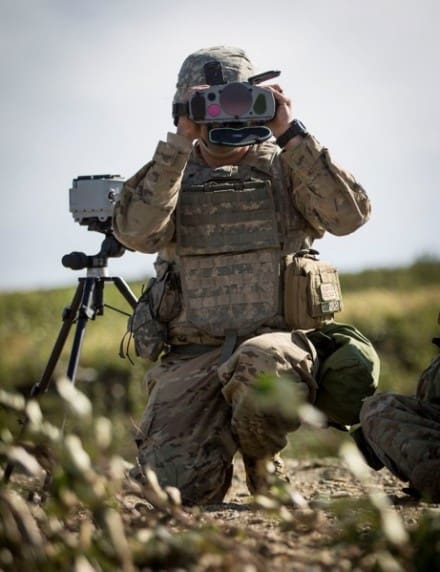 Soldiers from the 1st Stryker Brigade’s 2nd Battalion, 8th Field Artillery Regiment put the Joint Effects Targeting System (JETS) through its paces at the Cold Region Test Center (CRTC), Fort Greeley, Alaska. The Soldiers, all Forward Observers (FO), spent several weeks testing and evaluating the JETS during the Limited User Test (LUT) conducted by the Army’s Operational Test Command. More than 2,000 data calls were logged on the systems by six teams of FOs and data collectors. JETS, a hand-held, stand alone, true precision targeting device, represents a capability not yet available to Forward Observers. One of the Soldiers characterized it as the perfect hybrid system, fitting neatly between the Vector 21 Laser Target Locator (LTL) and the larger Lightweight Laser Designator Rangefinder (LLDR). At 17 pounds, JETS weighs less than half of the LLDR and offers greater precision than the Vector 21.
Soldiers from the 1st Stryker Brigade’s 2nd Battalion, 8th Field Artillery Regiment put the Joint Effects Targeting System (JETS) through its paces at the Cold Region Test Center (CRTC), Fort Greeley, Alaska. The Soldiers, all Forward Observers (FO), spent several weeks testing and evaluating the JETS during the Limited User Test (LUT) conducted by the Army’s Operational Test Command. More than 2,000 data calls were logged on the systems by six teams of FOs and data collectors. JETS, a hand-held, stand alone, true precision targeting device, represents a capability not yet available to Forward Observers. One of the Soldiers characterized it as the perfect hybrid system, fitting neatly between the Vector 21 Laser Target Locator (LTL) and the larger Lightweight Laser Designator Rangefinder (LLDR). At 17 pounds, JETS weighs less than half of the LLDR and offers greater precision than the Vector 21.
(Photos by Kyle Olson, PEO Soldier)
peosoldier.armylive.dodlive.mil/2017/10/24/soldiers-test-newest-precision-targeting-device
Tags: PEO-Soldier




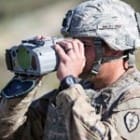
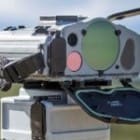
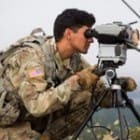
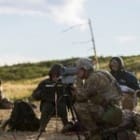
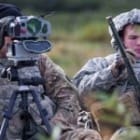
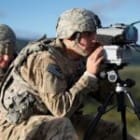
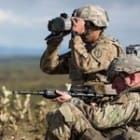
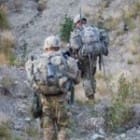
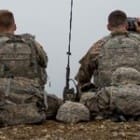
Based on the photos I’m not confident UCP is getting out of the system at this point. We’re gonna be mixing for a while if not forever. Lol
That’s your comment after reading all that? Sad.
As a Fister, have to say I can’t wait for these to show up — schlepping around the LLDR sucks.
Been to Ft. Greely twice. I HATE that place. Lead in the water from old pipes, and a de-commissioned old nuclear power plant in uncomfortable proximity to the chow hall (yep, seriously).
So, I had a PLRF. This thing is huge compared to that. Granted the range finder had to connect to a dagar but is was two if you realeased the “fire” button. It would have your grid and your azimuth and everything. You could also use it for CAS. Idk about this thing